Ardha Nareeswara Temple Hyderabad
The Ardha Nareeswara Temple is a Hindu temple dedicated to the god Shiva and goddess Parvati in the form of Ardha Nareeswara, a form in which Shiva and Parvati are merged into one body. The temple is located in the Kothaguda suburb of Hyderabad, Telangana, India.
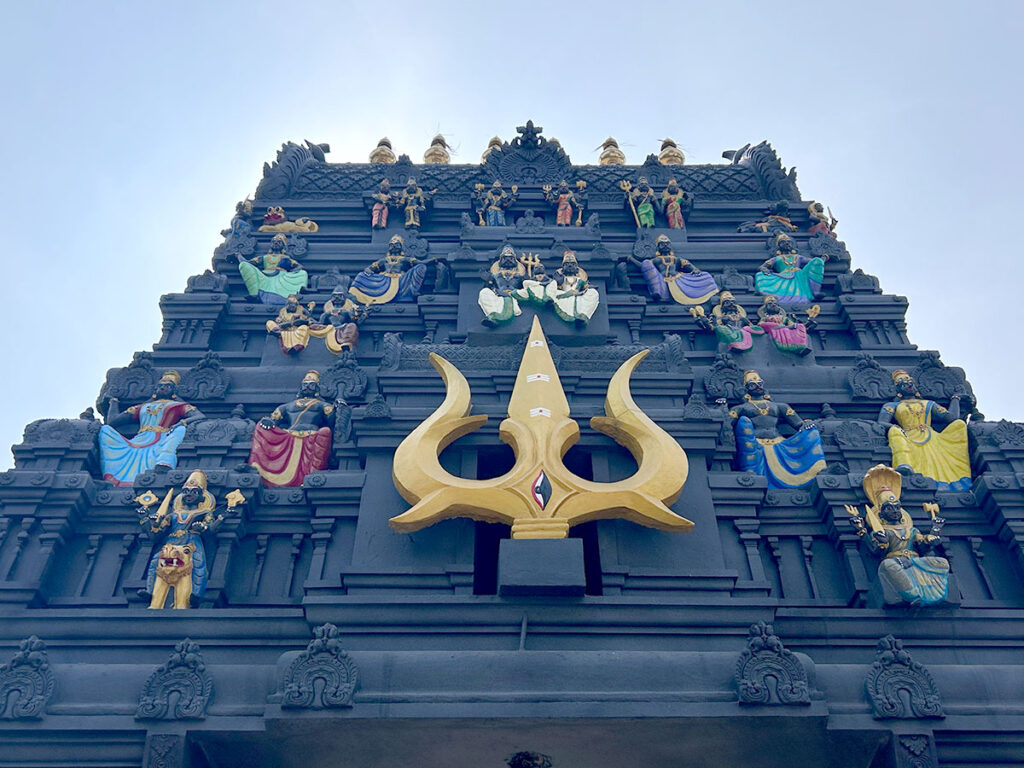
Contents
- 1 Ardha Nareeswara Temple History:
- 2 Significance of Ardha Nareeswara Temple:
- 3 Architecture of Ardha Nareeswara Temple:
- 4 Myths of Ardha Nareeswara Temple:
- 5 Ardha Nareeswara Temple Timing and Rituals:
- 6 Places to visit near Ardha Nareeswara Temple:
- 7 FAQ:
- 8 How to reach Ardha Nareeswara Temple:
- 9 Google Maps:
Ardha Nareeswara Temple History:
The temple is believed to have been built in the 12th century by the Kakatiya dynasty. The Kakatiyas were a Telugu dynasty that ruled from 1161 to 1324 CE, and they are known for their innovative architecture and sculpture. The Ardha Nareeswara Temple is a fine example of Kakatiya art, and it is one of the most important Shiva temples in Telangana.
The temple is made of red sandstone and it is decorated with intricate carvings. The main shrine houses the Ardhanareeswara idol, which is about 5 feet tall. The idol is depicted as a half-male, half-female figure, with Shiva’s side on the right and Parvati’s side on the left. Shiva is shown with his usual attributes, such as the trident and the damru, while Parvati is shown with her lotus and mirror.
Read More>> Skandagiri Temple of Sri Subrahmanya Swamy
Significance of Ardha Nareeswara Temple:
Religious Significance:
- Duality and Oneness: The Ardhanareeswara form represents the inseparable nature of Shiva and Parvati, highlighting the concept of Ardhanari (half-woman, half-man). This signifies the completeness and wholeness achieved through the harmonious blending of male and female principles.
- Cosmic Balance: The deity embodies the cosmic balance between the active (Shiva) and passive (Parvati) forces that uphold the universe. This balance is essential for creation, sustenance, and dissolution.
- Auspiciousness: Worshipping Ardhanareeswara is believed to bring blessings for marital harmony, fertility, and overall well-being. Devotees seek the deity’s guidance in maintaining balance and unity in their relationships and lives.
Cultural Significance:
- Architectural Legacy: The temple boasts exquisite architecture, showcasing intricate carvings and sculptures depicting various Hindu mythological figures and scenes. It stands as a testament to the artistic skill and devotion of past generations.
- Local Tradition: The temple is an integral part of the Kothaguda community, hosting regular prayer services, festivals, and cultural events. This strengthens the bonds among residents and preserves traditional customs and beliefs.
- Symbol of Inclusivity: The Ardhanareeswara form transcends gender distinctions, promoting the idea of equality and acceptance. This resonates with people from diverse backgrounds and fosters a sense of unity within the community.
Read More>> Parthasarathy Temple Chennai
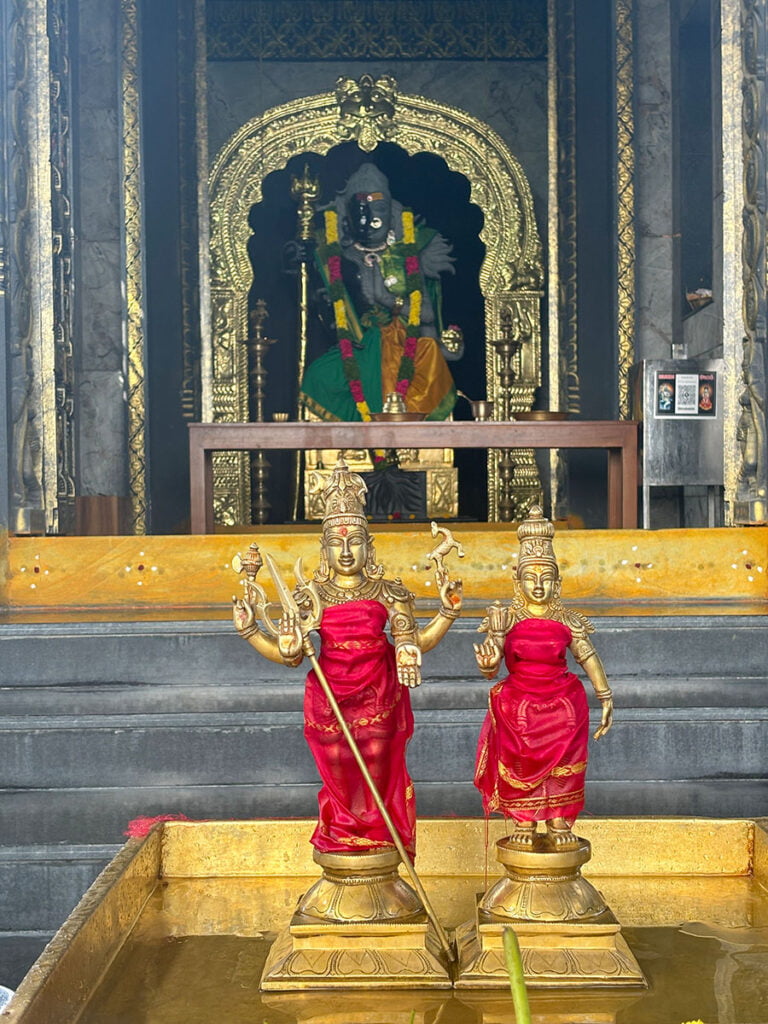
Architecture of Ardha Nareeswara Temple:
- The temple is built in the Vijayanagara style of architecture, characterized by its intricate carvings, ornate pillars, and pyramidal towers.
- The temple complex consists of a sanctum sanctorum, a mandapa (hall), and a prakaram (corridor).
- The sanctum sanctorum houses the Ardhanarishvara murti (idol), which is made of black granite and is about 5 feet tall.
- The mandapa is a spacious hall with beautifully carved pillars and ceilings.
- The prakaram is a corridor that surrounds the sanctum sanctorum and the mandapa. It is decorated with colorful paintings and sculptures.
Some of the key features of the temple architecture include:
- Gopurams: The temple has two gopurams, or gateway towers, at the entrance. The eastern gopuram is the larger of the two and is adorned with sculptures of various Hindu deities.
- Mandir walls: The walls of the temple are decorated with intricate carvings of scenes from Hindu mythology.
- Pillars: The pillars of the mandapa are beautifully carved with figures of mythical creatures and floral motifs.
- Ceiling: The ceiling of the mandapa is decorated with paintings of celestial beings and geometric patterns.
Read More>> Komuravelli Mallanna Temple

Myths of Ardha Nareeswara Temple:
1. Origin Story:
- The most prominent myth relates to the origin of the temple itself. It is believed that Lord Shiva and Parvati manifested as Ardha Nareeswara, the half-male, half-female form, to quell the demon Tarakasura. This powerful demon had obtained a boon that no man or woman could defeat him. By merging their divine energies, Shiva and Parvati created the androgynous Ardha Nareeswara, rendering Tarakasura’s boon useless and ultimately vanquishing him. The Ardha Nareeswara Temple in Kothaguda is said to be built at the very spot where this cosmic battle took place.
2. Balancing Yin and Yang:
- The Ardha Nareeswara form symbolizes the perfect balance of male and female energies, the yin and yang. It represents the harmonious union of opposites, showcasing that both masculine and feminine qualities are essential for completeness. This concept resonates deeply with Hindu philosophy, which emphasizes the interconnectedness of all things and the importance of maintaining balance in the universe.
3. Fertility and Auspiciousness:
- Worshipping Ardha Nareeswara is believed to be particularly beneficial for couples seeking blessings for fertility, marital harmony, and a happy family life. The temple is often visited by childless couples and newlyweds hoping for divine intervention. The temple’s serene atmosphere and the powerful energy of the Ardha Nareeswara form are said to create an auspicious environment for those seeking blessings related to love, marriage, and family.
4. Manifestations of Ardha Nareeswara:
- The myths surrounding Ardha Nareeswara extend beyond the Kothaguda temple. The deity appears in various forms across Hindu mythology, often associated with specific powers and attributes. Some notable examples include Dakshinamurthy, the embodiment of cosmic knowledge, and Harihara, the fusion of Vishnu and Shiva. Each manifestation of Ardha Nareeswara highlights different aspects of the divine, showcasing the multifaceted nature of this unique deity.
5. Local Folklore:
- The Kothaguda temple also has its own set of local legends and stories passed down through generations. Some speak of miracles witnessed within the temple walls, while others recount tales of the temple’s protective power over the surrounding area. These local myths add to the temple’s mystique and contribute to its enduring popularity among devotees.
Read More>> Rajarajeshwara Temple Vemulawada
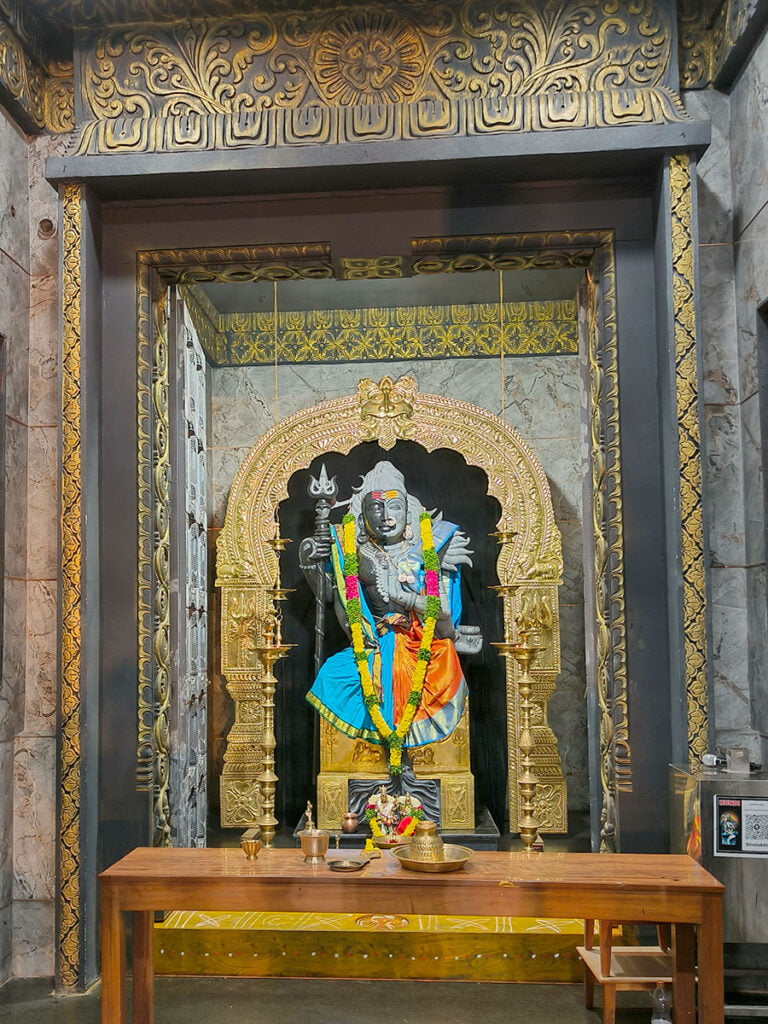
Ardha Nareeswara Temple Timing and Rituals:
Timings:
- General Opening Hours: The temple is open every day from 6:00 AM to 8:00 PM.
- Morning Darshan: 6:00 AM to 12:00 PM
- Evening Darshan: 4:00 PM to 8:00 PM
- Abhishekams and special pujas: Specific timings for these special rituals vary depending on the day and occasion. It’s best to contact the temple administration in advance for accurate timings.
Rituals:
- Darshan: This is the primary ritual, where devotees offer prayers and blessings to the deity. Traditionally, devotees offer flowers, fruits, and coconuts before worshipping the Ardha Nareeswara idol.
- Abhishekams: These are special rituals where the deities are bathed with milk, coconut water, panchamrita (a mixture of five nectars), and other sacred water. Specific Abhishekams are dedicated to Shiva and Parvati aspects of the combined form.
- Archana: This is a chanting ritual where a priest performs prayers and hymns praising the deity. Devotees can request Archana for specific wishes or blessings.
- Special pujas: The temple conducts various pujas throughout the year, including Rudra Abhishekam, Maha Mritunjaya Homam, and Durga Saptahastha Chandi Yagam. These are elaborate rituals with specific purposes and require prior booking.
Read More>> Kaleshwaram Temple: Mukthishwara Swamy
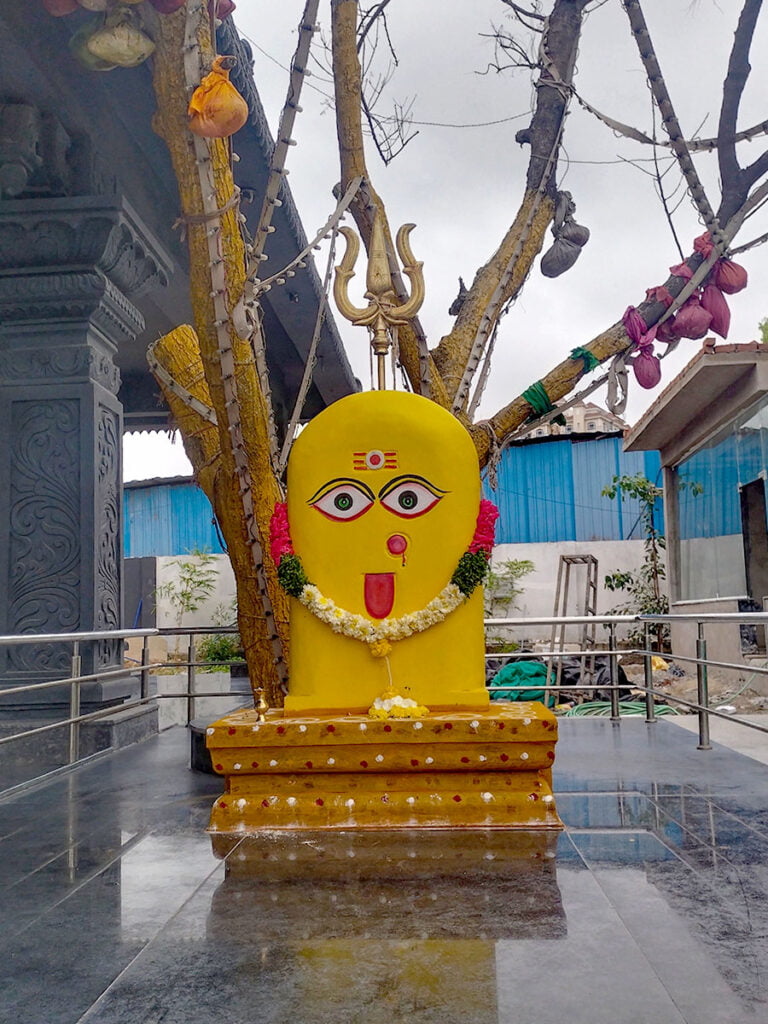
Places to visit near Ardha Nareeswara Temple:
- Shilparamam: An arts and crafts village located in the heart of Hyderabad, showcasing traditional Indian arts and crafts.
- HITEC City: The Hyderabad Information Technology and Engineering Consultancy City (HITEC City) is a major IT and business district with modern infrastructure, shopping malls, and restaurants.
- Golconda Fort: A historic fort known for its architectural brilliance and panoramic views of the city.
- Qutub Shahi Tombs: A complex of tombs of the Qutub Shahi dynasty, known for their unique architectural style.
- Botanical Gardens: The Hyderabad Botanical Gardens, near Kondapur, offer a peaceful environment with a variety of plants and greenery.
- Shilparamam Crafts Village: Located in HITEC City, it’s an arts and crafts village that showcases the diverse cultures and traditions of India.
- Chilkur Balaji Temple: Popularly known as the “Visa Balaji Temple,” it’s one of the oldest temples in Hyderabad and is known for devotees seeking blessings for their visas.
- Osman Sagar Lake (Gandipet): A serene lake offering a picturesque setting for relaxation and picnics.
Read More>> Dakshin Ke Badrinath Temple Hyderabad
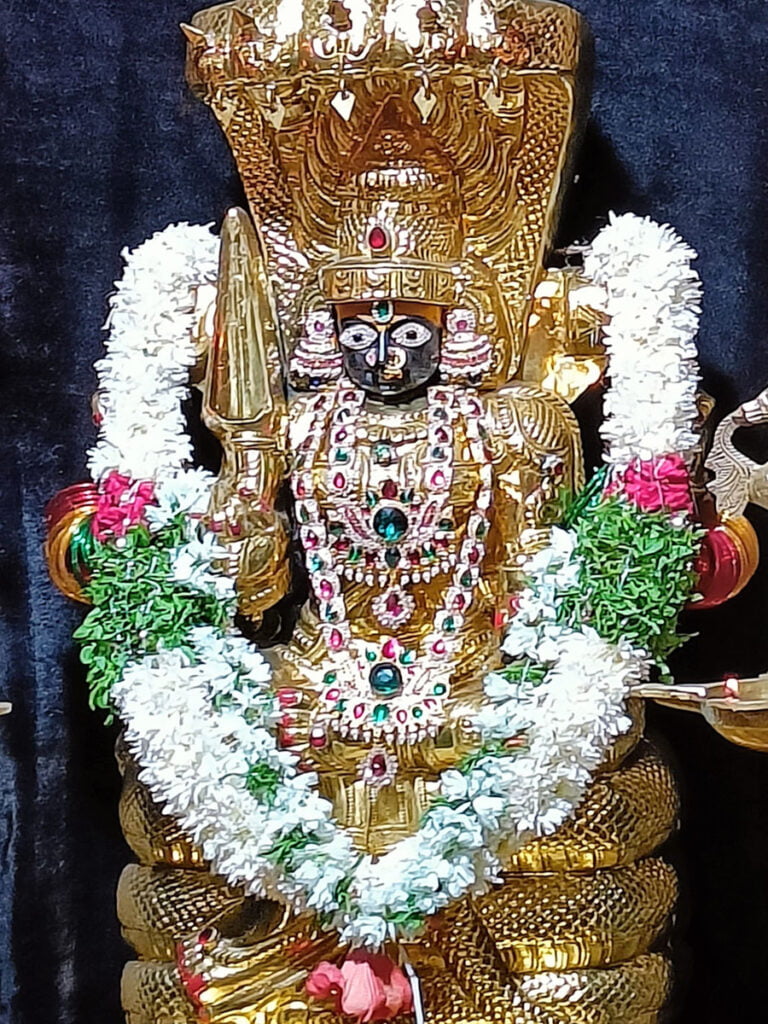
FAQ:
1. What is the Ardha Nareeswara Temple?
The Ardha Nareeswara Temple is a Hindu temple dedicated to the god Shiva in the form of Ardhanariswara, the half-man, half-woman form of Shiva. It is located in Kothaguda, Hyderabad, Telangana, India.
2. When was the Ardha Nareeswara Temple built?
The exact date of construction of the Ardha Nareeswara Temple is unknown, but it is believed to have been built in the 7th or 8th century AD. It is a Pallava-style temple, and its architecture is similar to that of other Pallava temples in the region, such as the Kailasanatha Temple in Kanchipuram.
3. What are the features of the Ardha Nareeswara Temple?
The Ardha Nareeswara Temple is a square-shaped temple with a vimana (sanctum sanctorum) in the center. The vimana is topped with a pyramidal roof, and it is decorated with sculptures of gods and goddesses. The temple also has a mandapa (hall), which is used for worship and other religious ceremonies.
The most striking feature of the temple is the image of Ardhanariswara in the vimana. The image is carved from a single block of granite, and it is one of the finest examples of Pallava sculpture. The image shows Shiva and Parvati united in a single body. Shiva is represented on the right side of the image, and Parvati is represented on the left side.
How to reach Ardha Nareeswara Temple:
- By Air: The nearest airport is Rajiv Gandhi International Airport in Shamshabad, Hyderabad. From there, you can take a taxi or cab to reach Kothaguda.
- By Train: Hyderabad Deccan (Nampally) and Kacheguda are the main railway stations in Hyderabad. From these stations, you can take local transportation like buses, autos, or taxis to Kothaguda.
- By Road: Kothaguda is well-connected by road. You can reach Kothaguda via public buses, private taxis, auto-rickshaws, or your own vehicle.
- Local Transportation: Once you reach Kothaguda, you can use local transportation options like autos, taxis, or even ride-sharing services to reach your specific destination.
